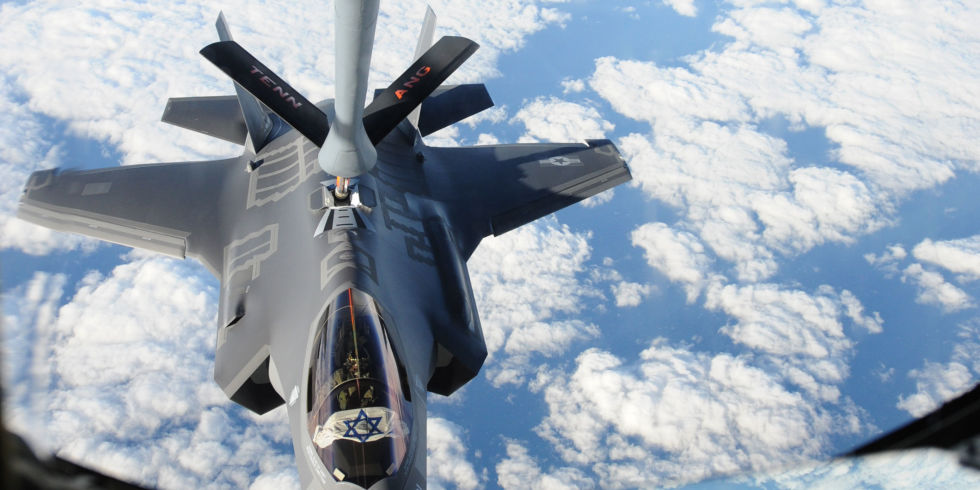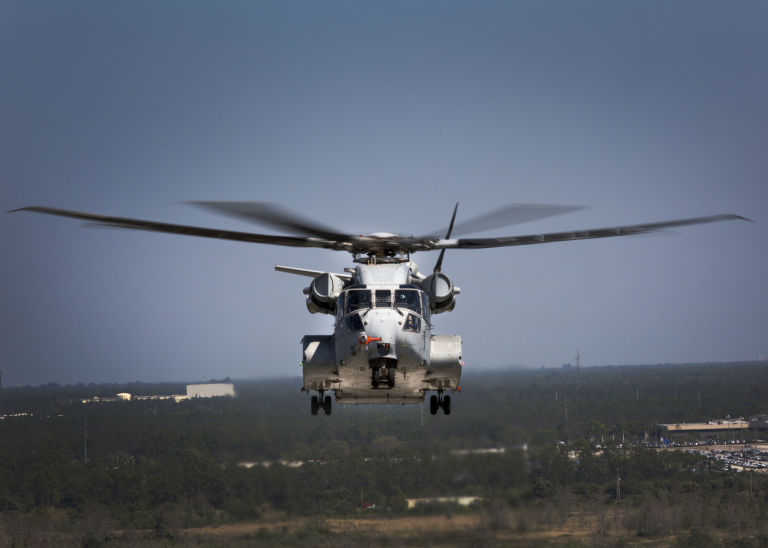rr3
JF-Expert Member
- Mar 19, 2015
- 3,044
- 3,797
Israel Doubles Down on High-Tech Air Power
New fighters, more roles for unmanned aircraft, and a new fifth generation missile.

U.S. Air Force photo by 1st Lt. Erik D. Anthony.

By Kyle Mizokami
Jun 22, 2017
Since it was founded in 1948, Israel has fought more than a half-dozen wars against neighboring Arab states including Egypt, Syria, and Iraq, not to mention "nonstate actors" such as Hamas and Hezbollah. With the assistance of the United States the tiny country maintains the most highly trained and best equipped armed forces in the region.
Although the military threat from most of its traditional enemies have been neutralized by peace treaties (Jordan, Egypt) or internal conflict (Syria, Iraq), Israel continues to modernize its air power. The primary reason? Iran, which was until recently developing nuclear weapons and the missiles to deliver them.
Israel is honing its strike capabilities as a warning to Iran not to restart its nuclear program, and a key part of warning, as Aviation Week & Space Technology points out, is Israel's purchase of 50 F-35A Joint Strike Fighters. Known locally as "Adir", the F-35A's stealth and attack capabilities would be vital if Israel needed to penetrate Iranian airspace. In fact, the article is basically a checklist of new systems and upgrades to existing ones necessary to mount an Israeli air campaign over Iran.

CH-53 King Stallion.
U.S. Marine Corps photo by Lance Cpl. Molly Hampton.
Among those systems are the Hermes 900 and Heron TP unmanned drones, which AvWeeksays will receive upgrades to allow them to continue to operate "in the presence of advanced air defense systems." The article also mentions Israel's need for new aerial refueling tankers, a must-have considering the F-35A's relatively short combat range. Finally, Israel needs new heavy transport helicopters, either the CH-47F Chinook or CH-53K King Stallion, for rescuing downed pilots at extreme ranges or transporting Israeli special forces.
Meanwhile, AvWeek has also reported on the new Spike LR II air-to-ground missile. Originally designed as an anti-tank missile, Spike has grown into a multipurpose missile capable of engaging a variety of targets on the ground. The previous Spike missile was a commercial success and arms countries from the United Kingdom to South Korea. Here's a video of the original Spike in action, featuring video relayed from the nose camera right until the missile strikes its target:
The new Spike LR II is described by Israeli manufacturer Rafael as a "fifth generation" missile that can defeat a variety of defensive schemes, from pop-up targets to tanks sporting the latest active protection systems. According to AvWeek, the new Spike has a " new, passive and uncooled multiband seeker that integrates both thermal and high-definition color imagery, increasing the weapon's target acquisition and tracking efficiency even against complex and evasive targets". Spike LR II uses artificial intelligence to track difficult targets previous missiles could not engage. The missile also features a 30 percent increased capability against tank armor and engagement angles of up to 70 degrees, apparently in an attempt to bypass the radars of a tank's active protective systems. A second warhead is optimized to destroy bunkers and fortifications.
New fighters, more roles for unmanned aircraft, and a new fifth generation missile.

U.S. Air Force photo by 1st Lt. Erik D. Anthony.

By Kyle Mizokami
Jun 22, 2017
306
Since it was founded in 1948, Israel has fought more than a half-dozen wars against neighboring Arab states including Egypt, Syria, and Iraq, not to mention "nonstate actors" such as Hamas and Hezbollah. With the assistance of the United States the tiny country maintains the most highly trained and best equipped armed forces in the region.
Although the military threat from most of its traditional enemies have been neutralized by peace treaties (Jordan, Egypt) or internal conflict (Syria, Iraq), Israel continues to modernize its air power. The primary reason? Iran, which was until recently developing nuclear weapons and the missiles to deliver them.
Israel is honing its strike capabilities as a warning to Iran not to restart its nuclear program, and a key part of warning, as Aviation Week & Space Technology points out, is Israel's purchase of 50 F-35A Joint Strike Fighters. Known locally as "Adir", the F-35A's stealth and attack capabilities would be vital if Israel needed to penetrate Iranian airspace. In fact, the article is basically a checklist of new systems and upgrades to existing ones necessary to mount an Israeli air campaign over Iran.

CH-53 King Stallion.
U.S. Marine Corps photo by Lance Cpl. Molly Hampton.
Among those systems are the Hermes 900 and Heron TP unmanned drones, which AvWeeksays will receive upgrades to allow them to continue to operate "in the presence of advanced air defense systems." The article also mentions Israel's need for new aerial refueling tankers, a must-have considering the F-35A's relatively short combat range. Finally, Israel needs new heavy transport helicopters, either the CH-47F Chinook or CH-53K King Stallion, for rescuing downed pilots at extreme ranges or transporting Israeli special forces.
Meanwhile, AvWeek has also reported on the new Spike LR II air-to-ground missile. Originally designed as an anti-tank missile, Spike has grown into a multipurpose missile capable of engaging a variety of targets on the ground. The previous Spike missile was a commercial success and arms countries from the United Kingdom to South Korea. Here's a video of the original Spike in action, featuring video relayed from the nose camera right until the missile strikes its target:
The new Spike LR II is described by Israeli manufacturer Rafael as a "fifth generation" missile that can defeat a variety of defensive schemes, from pop-up targets to tanks sporting the latest active protection systems. According to AvWeek, the new Spike has a " new, passive and uncooled multiband seeker that integrates both thermal and high-definition color imagery, increasing the weapon's target acquisition and tracking efficiency even against complex and evasive targets". Spike LR II uses artificial intelligence to track difficult targets previous missiles could not engage. The missile also features a 30 percent increased capability against tank armor and engagement angles of up to 70 degrees, apparently in an attempt to bypass the radars of a tank's active protective systems. A second warhead is optimized to destroy bunkers and fortifications.